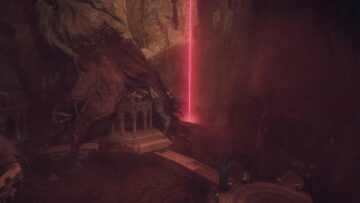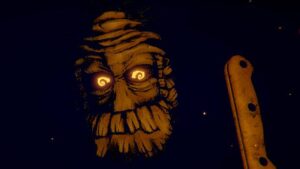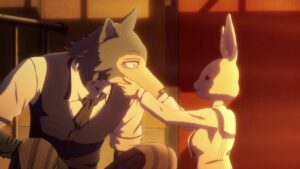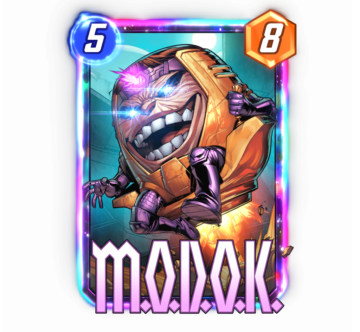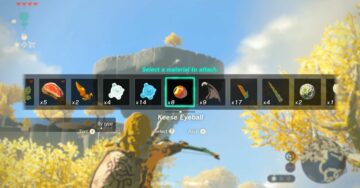Overwatch’s newest character, the support hero Kiriko, is having a different style of rollout. She’s the first new hero to be included as part of Overwatch 2’s battle pass, meaning that while many players have access to Kiriko, others are still grinding away to unlock her. She’s also just been added to one of Overwatch 2’s core modes, and her viability in competitive gameplay will be tested in the coming weeks and months.
Kiriko also had a somewhat unusual path into the game itself: She started as a piece of concept art intended for Overwatch 2’s PvE component, which Blizzard plans to deliver next year. Originally conceived as an enemy unit type, Kiriko graduated to full hero based on her strong visual design. She’s also been in the works in various incarnations for about four years, as Blizzard attempted to turn a drawing of a streetwear-sporting healer-ninja with a ghostly fox into a playable hero.
Senior hero designer Joshua Noh told Polygon in a recent interview that Kiriko went through “probably four support kits’ worth of abilities, just trying to find what’s fun and what works in the game, especially with the new five-versus-five paradigm for PvP.”
Kiriko “started as just a really cool art piece that [character art director] Arnold [Tsang] drew,” Noh recalled. “He drew a whole bunch of ninjas [that] could potentially be enemies. And we we’re like, Hey, this one looks super awesome. Let’s try and make it into a hero.” Noh said that Kiriko’s spirit fox was originally “sort of like a pet class in an MMO and follows you around” healing your teammates. But that idea proved too difficult to implement, and eventually evolved into Kiriko’s ultimate ability, Kitsune Rush, which presented technical challenges of its own.
“There’s a lot of stuff happening in the background there,” Noh said, explaining that Kiriko’s fox needs to navigate around in-game objects, gaps on the floor, and terrain. “Displaying such a big area as [a huge buff] is kind of a challenge in a game that’s already as visually noisy as Overwatch.”
Image: Arnold Tsang/Blizzard Entertainment
Kiriko’s original design included a comically oversized shuriken that acted liked a yo-yo or boomerang — a weapon that was eventually repurposed for another hero, Junker Queen, who throws a knife that can be recalled.
“It was very fun to use,” Noh said of Kiriko’s shuriken. “But we ran into this problem where it created this very striking silhouette that looked very deadly, like a DPS player, and people kind of expected that weapon to really take people out. […] But one of the other challenges we ran into along the way with her [ninja design] was that all the abilities were really hard to translate to healer gameplay.” The team experimented with a shotgun-like healing weapon, but wanted to avoid magic or ninja tropes, Noh said. Ultimately, they settled on healing and cleansing talismans called ofuda, which leans more toward the spiritual than the magical, that use relatively new homing technology built for Overwatch 2.
Noh said that Kiriko started out as a “trickster hero, and she had a lot of ways to kind of deceive the enemy team.” Early versions of her kit included smoke bombs and a “ninja shadow clone ability” that players could swap places with. But ultimately, the goal with Kiriko was to “try to incentivize DPS players a little bit to try to support,” Noh said, “kind of like trying to attract all the Genji tracer type of players over to the support role.” (Overwatch 2 players are likely aware that that well-meaning goal has done little to abate queue times for the damage role, but it was an admirable attempt.)
Kiriko’s back story and connection to the heroes of Overwatch is outlined in a short story penned by Christie Golden titled “Yokai,” and in an animated short released in early October. But according to narrative designer Kyungseo Min, Kiriko’s role as the protector of Kanezaka and her ties to the Shimada brothers Genji and Hanzo, has been seeded in Overwatch since early 2021. The deathmatch map Kanezaka includes references to foxes, the Yokai vigilante group that Kiriko is a member of, and the rival Hashimoto clan who run the Tiger’s Den bar in that neighborhood.
[embedded content]
“We definitely wanted her to have some sort of tie with the Shimada brothers,” Min said. “An early iteration was [that Kiriko was] their long-lost sister, but we ditched that idea because we wanted to make our worldview look a little bit bigger, but still connected. We landed on [Kiriko being] a family friend, like a niece sort of relationship between those two.
“Since we were working on Kanezaka, we’d already had her in mind and shaping her personality, and how she fits in with the Overwatch universe and the Shimada clan falling and the Hashimoto taking over… She’s just sort of a part of a youthful group of vigilantes protecting the community.”
Kiriko’s personality in Overwatch 2 derived from a variety of sources of inspiration, including Kaoru Kamiya, the kendo instructor (and love interest) from the manga/anime Rurouni Kenshin. According to Min, the narrative team wanted to match Kiriko’s personality, in some ways to her play style. Kiriko merges both offense and support, with an attitude to match: “in your face” in a fight, but also traditional, reserved, and dryly witty.
“It was actually really fun trying to balance those two sort of opposing personalities,” Min said. “I think we had a lot of fun actually trying to deliver that dry, sort of flatter tone, because we’ve always wanted to do it, it’s just very difficult to balance that in the soundscape of our game. You only have a few seconds to really like communicate to the players, so they have to be a larger than life… So to try to get [Kiriko’s] deadpan humor right was really challenging.”
Min added, “There’s [a Kiriko] interaction with D.Va that I really enjoy just because it really shows our optimistic future Overwatch world. They’re both very strong woman — they’re very blunt, both of them. So there’s one line where D.Va goes, ‘Can they get anything done without us?’ and Kiriko says, ‘It’s a full-time job being the capable ones.’ I’ve definitely had those kinds of conversations with my girlfriends, and I like being able to instill that into our world.”

Image: Blizzard Entertainment
Min said that voice actor Sally Amaki, who has done voice work for anime and is a member of the virtual singing group 22/7, “brought [Kiriko] to life.”
“This is her first game work, so there was a learning curve, because vocally [games have] very different delivery,” Min recalled. “But she just was such a champ — she went through four-hour late night sessions like nothing and would be like, Oh, yeah, I have a concert tomorrow, because she’s part of a J-pop idol group.”
As for Kiriko’s future, Min was hesitant to say where her story — and that of her Shimada brother pals — is headed. But with the Hashimoto clan, as seen in Kiriko’s animated short, potentially serving as good cannon fodder for a PvE mode, one can imagine the game’s ninja trio teaming up to clean up the streets of Kanezaka next year.
“She’s definitely going to be key in what is happening in Kanezaka, as far as the Shimada clan falling and the Hashimoto terrorizing the neighborhood,” Min said. “The brothers are definitely not going to lie still, either, as the clan that overpowered them continue to terrorize what was once their territory.”


